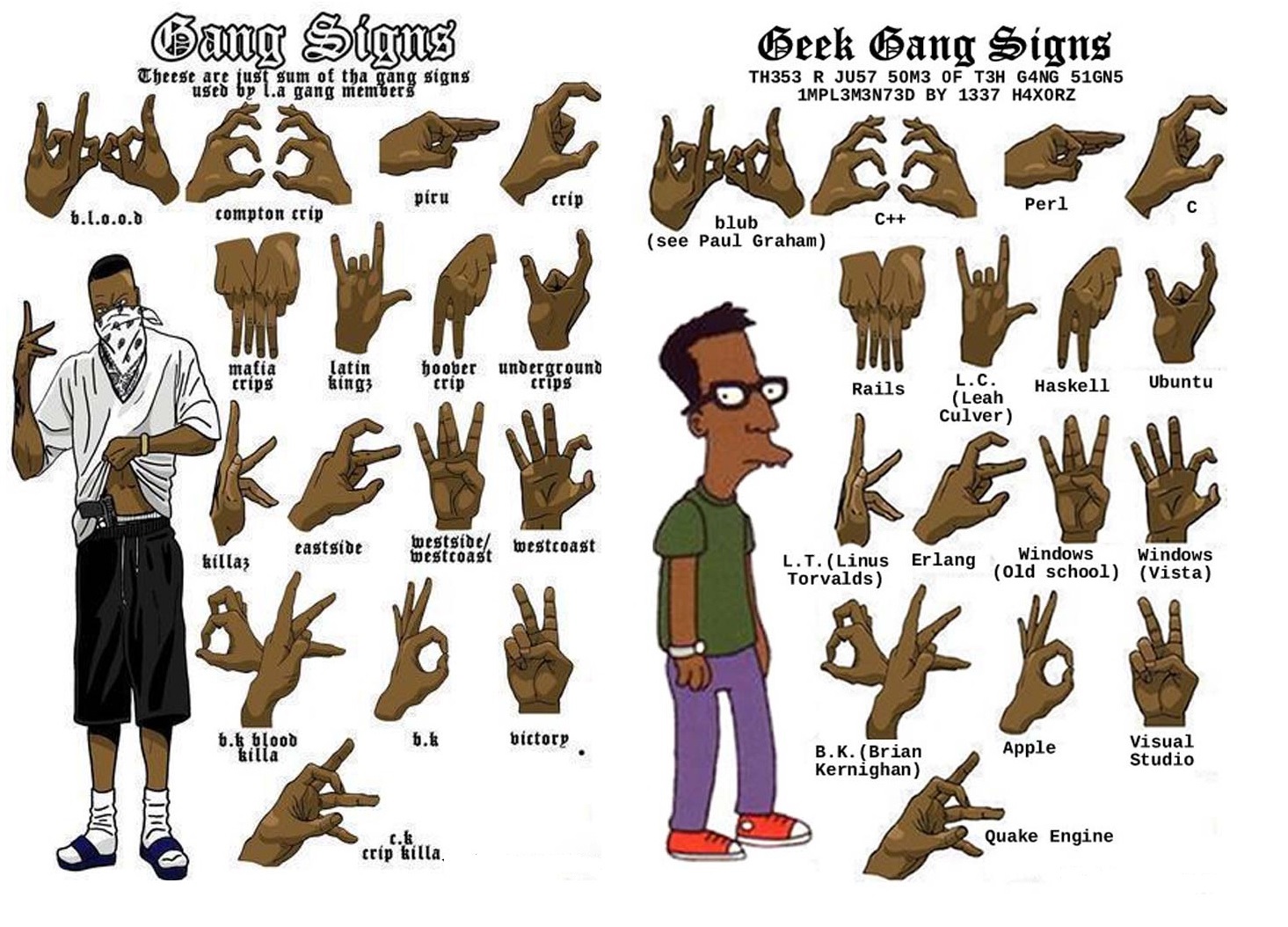Gang signs are a complex and often misunderstood form of communication used primarily by gang members to convey messages, assert territory, and demonstrate affiliation. These signs can be expressed through hand gestures, symbols, colors, and even clothing styles. While some may view them as mere expressions of rebellion, they carry significant meaning and serve various purposes within gang culture. Understanding what gang signs are and how they are used requires a deeper look into the sociological and psychological factors that contribute to their existence.
Throughout history, gang signs have evolved, adapting to the changing dynamics of both society and the individuals who partake in these subcultures. What may seem like an innocuous gesture to outsiders can hold profound implications for those within the community. These signs can indicate everything from allegiance to a specific group to warnings of impending violence, making them a critical component of gang identity.
As we delve into the world of gang signs, we will explore the questions surrounding their significance, the various forms they take, and the impact they have on both individuals and communities. It is essential to approach this topic with an open mind and a willingness to understand the intricacies of gang culture, as well as the broader societal issues that contribute to its existence.
What Are the Different Types of Gang Signs?
Gang signs can be classified into several categories, each conveying distinct meanings. Here are some of the most common types:
- Hand Signs: Specific gestures made with the fingers or hands that represent a gang or a message.
- Graffiti: Visual symbols painted on walls or surfaces that signify territory or messages.
- Colors: Certain colors worn by gang members to identify their affiliation.
- Clothing Styles: Specific clothing choices that can indicate membership in a gang.
Why Do Gangs Use Signs?
Gang signs serve multiple purposes, including:
- Communication: They allow gang members to communicate quickly and discreetly.
- Territorial Claims: Signs can mark a gang's territory and warn others to stay away.
- Identity and Unity: Signs reinforce a sense of belonging and solidarity among members.
- Intimidation: Displaying signs can intimidate rivals and assert dominance.
How Are Gang Signs Created and Evolved?
Gang signs are often created based on a combination of cultural influences, local traditions, and the unique history of the gang itself. Over time, these signs may evolve as new members join, or as the gang adapts to law enforcement tactics. The creativity involved in developing new signs can reflect the group's identity and aspirations.
What Are the Risks of Using Gang Signs?
While gang signs may serve as a means of communication, they also carry significant risks:
- Legal Consequences: Displaying gang signs can lead to arrest or increased scrutiny by law enforcement.
- Violence: Misinterpretation of signs can escalate conflicts between rival gangs.
- Social Stigma: Individuals associated with gang signs may face discrimination in various aspects of life.
How Can Gang Signs Impact Communities?
The presence of gang signs in a community can have both positive and negative effects:
- Negative Impact: Increased gang activity can lead to violence and crime, affecting the overall safety of the community.
- Positive Impact: In some cases, gangs may engage in community service or initiatives, using their influence for positive change.
What Are the Myths Surrounding Gang Signs?
There are several misconceptions about gang signs that contribute to misunderstandings:
- All Gang Signs Indicate Violence: Not all signs are intended to convey violence; some may be harmless expressions of identity.
- Only Criminals Use Gang Signs: Individuals outside of gangs may also adopt certain signs for cultural or artistic reasons.
- Gang Signs Are Universal: Signs can vary significantly between different regions and gangs, making them unique to specific groups.
How Can Communities Address the Issue of Gang Signs?
Addressing the issue of gang signs requires a multifaceted approach:
- Education: Educating the community about the meanings of gang signs can foster understanding and reduce fear.
- Engagement: Encouraging dialogue between law enforcement and community members can help address concerns.
- Support Programs: Providing support and resources for at-risk youth can help deter gang involvement.
What Can Individuals Do to Stay Safe from Gang Activity?
For individuals living in areas where gang signs are prevalent, safety is paramount. Here are some tips:
- Avoid Confrontation: If you encounter gang members, it's best to avoid confrontation and walk away.
- Stay Informed: Understanding local gang dynamics can help you navigate the situation safely.
- Report Suspicious Activity: If you see gang-related activity, report it to local authorities.
Conclusion: Understanding What Are Gang Signs
In conclusion, gang signs are more than just hand gestures or symbols; they are a complex language that reflects the culture, identity, and struggles of those involved. Understanding what gang signs are and their implications is crucial for fostering a safer community and addressing the roots of gang involvement. By promoting education and open dialogue, we can work towards a future where individuals feel empowered to break free from the cycle of gang affiliation and violence.
Discovering Affordable Cameras For Vlogging Enthusiasts
Mastering The Art Of Scoring: Kevin Durant's Shooting Form
Exploring The Timeless Charm Of The "Violets Are Blue, Roses Are Red" Song


